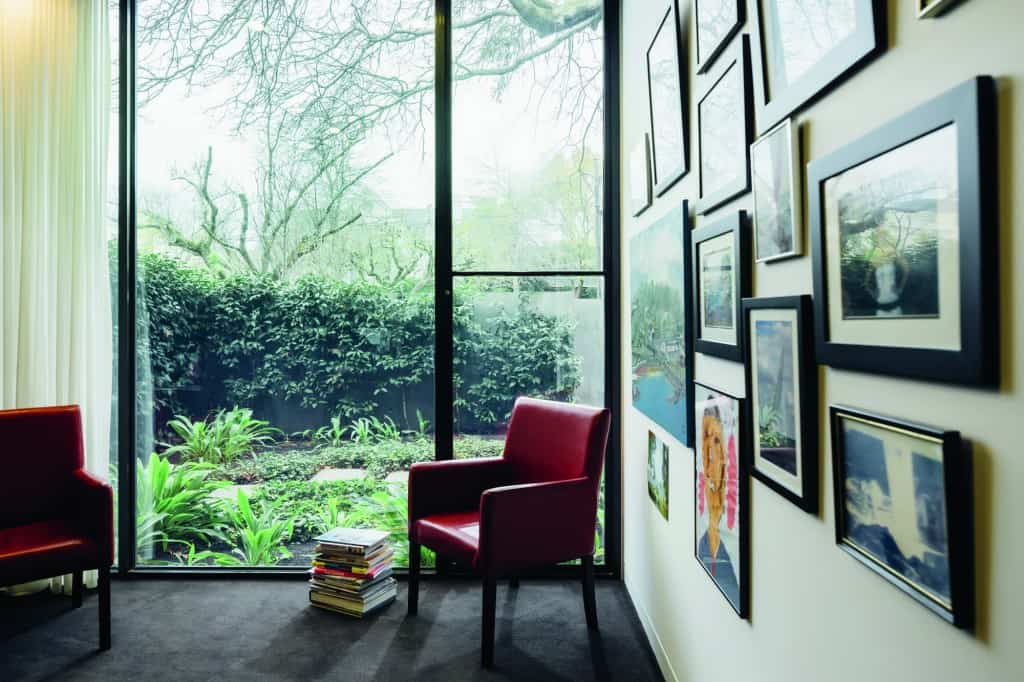Choosing the right glass
Gary Smith discusses some of the myriad options for glass selection and explains where and why certain types should be installed in homes.
There are two sets of factors you need to consider when choosing the right glass for any home. The basic factors are climate, location and the orientation of the windows. The four secondary factors which determine the right glass are insulation, heat loss and heat gain, ventilation and acoustics.
Location
If a home is located in areas that experience colder, longer winters, you need to select glass that offers better insulation than ordinary glass due to the fact that ordinary glass allows heat to leak out during cold weather. The best way to insulate your windows is to choose low emissivity (Low E) glass. This type of glass acts like insulation and significantly improves the energy efficiency of homes. Double-glazed windows offer improved insulation as well as improved noise reduction. For homes located in warmer climate zones, it is better to choose glass that absorbs and reflects the heat such as toned (tinted) glass or toned Low E.
Orientation
Understanding the orientation of windows and how much sun they get exposed to throughout different seasons will influence what type of glass is required. To get the best results from windows, consider the following guidelines:
Achieving a thermally efficient house can be helped by orientating the home’s glass to the north where possible, with eaves or shading to keep the summer sun off the glass.
Northerly facing sunrooms capture the best of the sunny aspect without the harshness of the afternoon heat.
Most bedrooms should get morning sun; therefore a north-east position is a good option.
The westerly sun as it sets is the most severe in summer and so using a Low E coated glass with a tint in the glass, which makes it appear slightly darker, will significantly help keep out that uncomfortable sun load. If you are working on an existing home or a block that won’t accommodate a northerly orientation, you can still use different types of glass to help manage sun load, noise, privacy etc.

Site and surrounding area
Glass selection will also depend on the site of the home. For example, if it is located in a high density urban area, an acoustic noise-reducing glass, like Viridian’s ComfortHush™, may be suitable to help reduce unwanted noise. Some homeowners may also face privacy issues, in which case you can consider a glass that allows natural light to enter the home while providing privacy at the same time.
The importance of energy efficient glass for Australian homes
Put simply, modern homes should not be built with anything less than a Low E glass and preferably with double glazing. Ordinary windows are merely an energy leak. A typical, adequately-insulated building that uses ordinary glass can lose up to 49% of heat through the windows in winter. The same windows allow up to 87% of solar heat gain during summer.
This is where performance glass, such as Viridian’s entry-level energy efficient product, SmartGlass™, comes into play.
Viridian’s SmartGlass™ works like wall and ceiling insulation, protecting the home from extremes of heat and cold. It offers greater insulation performance, 39% better than ordinary glass, combined with a choice of four levels of solar protection. As it is single glazed, it can fit in most standard window frames and whilst it has the same thickness as ordinary glass, its special durable Low E coating improves its insulation significantly over that of ordinary glass.
Double glazing is now commonly available and so its pricing has improved significantly. Choosing a double glazing product allows you to mix and match glass to achieve different performance outcomes. Double glazing also offers a combination of insulation, security and noise reduction properties for domestic windows, allowing homeowners to achieve expansive areas of glazing in their home but also keep out noise, intruders and damaging UV light, offering ‘sanctuary’ from the outside world. It is also important to remember that different windows within a building demand different performance levels. Make sure to choose the glazing solution that best meets the building’s various requirements.
1 Source: seebeyondwindows.com.au
2 Source: SmartGlass™ website.
Benefits of performance glass
Viridian’s SmartGlass™, which fits in a standard frame, should only cost 15-30% more than ordinary windows but can offer up to 25% savings on heating and cooling bills. Its greater insulation performance is 39% better than ordinary glass.
Ordinary glass offers little insulation. Low E single glazing is an improvement, however, Low E double glazing, is the most effective way to achieve superior insulation.
Double glazed products allow you to mix and match multiple glass to achieve different performance outcomes.
Thank you to Viridian for supplying this information on glass selection, it must be pointed out that there are many different products in the market and you should consider using upgrades from clear float glass as mentioned in the article. Consider tinted and tinted low E products to reduce solar heat gain, low E and double glazing combinations for added insulation, laminates for safety and acoustic performance, laminates to reduce UV and toughened products for safety. Discuss your requirements with your window supplier and a solution can be achieved for a more liveable home.
